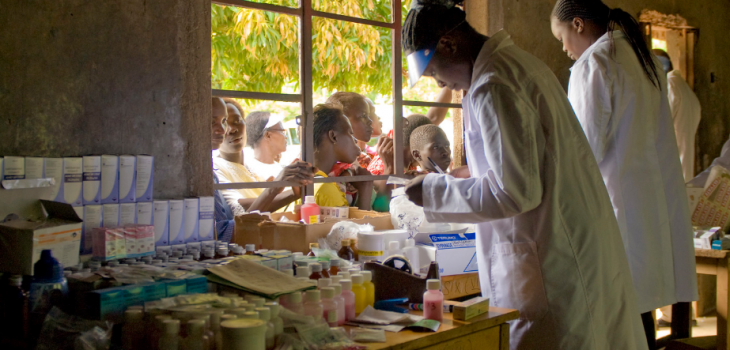By Ebiowei S.F Orubu (Niger Delta University) & Sachiko Ozawa (University of North Carolina at Chapel Hill)
What does access to medicines in health systems mean, and why is this of concern?
This special issue in the journal Health Policy and Planning entitled “Access to Medicines through Health Systems in Low- and Middle-Income Countries” attempts to provide answers to these questions. It contains original research articles encompassing: legislating for access to medicines as a human right; health inequalities arising from poor-quality medicines; the irrational use of medicines; access to cardiovascular medicines for children; and performance-based financing as a tool to improving access.
It is a curated list of articles from mainly authors from low- and middle-income countries (LMICs) united in the unique focus on medicine access from the perspective of the goal to achieve Universal Health Coverage (UHC). Specifically, we examined access through availability, affordability, accessibility, acceptability, and quality – meaning how to make sure that people can use the right medicines of the right quality at the right price and at the right place. The list of articles was put together through a call for abstracts from the Medicines in Health Systems Thematic Working Group of Health Systems Global – an organization driven by a diverse, global membership of researchers, decision-makers, and implementers who are dedicated to promoting health systems research and knowledge translation. This diverse list of articles illustrate the complexity of access to medicines in LMICs, as well as propose some solutions. These solutions include:
- a checklist and benchmarks for legislative reforms for access to medicines in UHC policies;
- context-specific modeling providing evidence that improving the quality of antimalarials reduces the health burden of malaria especially among poor and rural populations;
- a composite indicator for assessing the types of inappropriate uses of medicines to inform targeted interventions;
- subsidies to make medicines compounded for children more accessible; and
- an innovative financial approach to improving the perception of increased medicine availability.
Access to medicines is part of our right to health as noted by the United Nations’ Sustainable Development Goals, but nearly 2 billion people globally have no access to essential medicines. We do hope this issue helps to bring focus to these often neglected areas of access to medicines in health systems in LMICs. We also hope you enjoy reading and learning from them as we did!
Articles in the supplement
- Editorial (Sachi Ozawa et al)
- Original research article (Isidore Sieleunou et al). How does performance-based financing affect the availability of essential medicines in Cameroon? A qualitative study.
- Original research article (Ebiowei Orubu et al). Access to essential cardiovascular medicines for children: a pilot study of availability, price and affordability in Nigeria.
- Original research article (Vera Lucia Luiza et al). Inappropriate use of medicines and associated factors in Brazil: an approach from a national household survey.
- Original research article (Daniel Evans et al.). Poor-quality anti-malarials further health inequalities in Uganda.
- Original research article (Katarina Perhudoff et al). Legislating for universal access to medicines: a rights-based cross-national comparison of UHC laws in 16 countries.
Image credit: US Army Africa/Flickr, Creative Commons license 2.0











